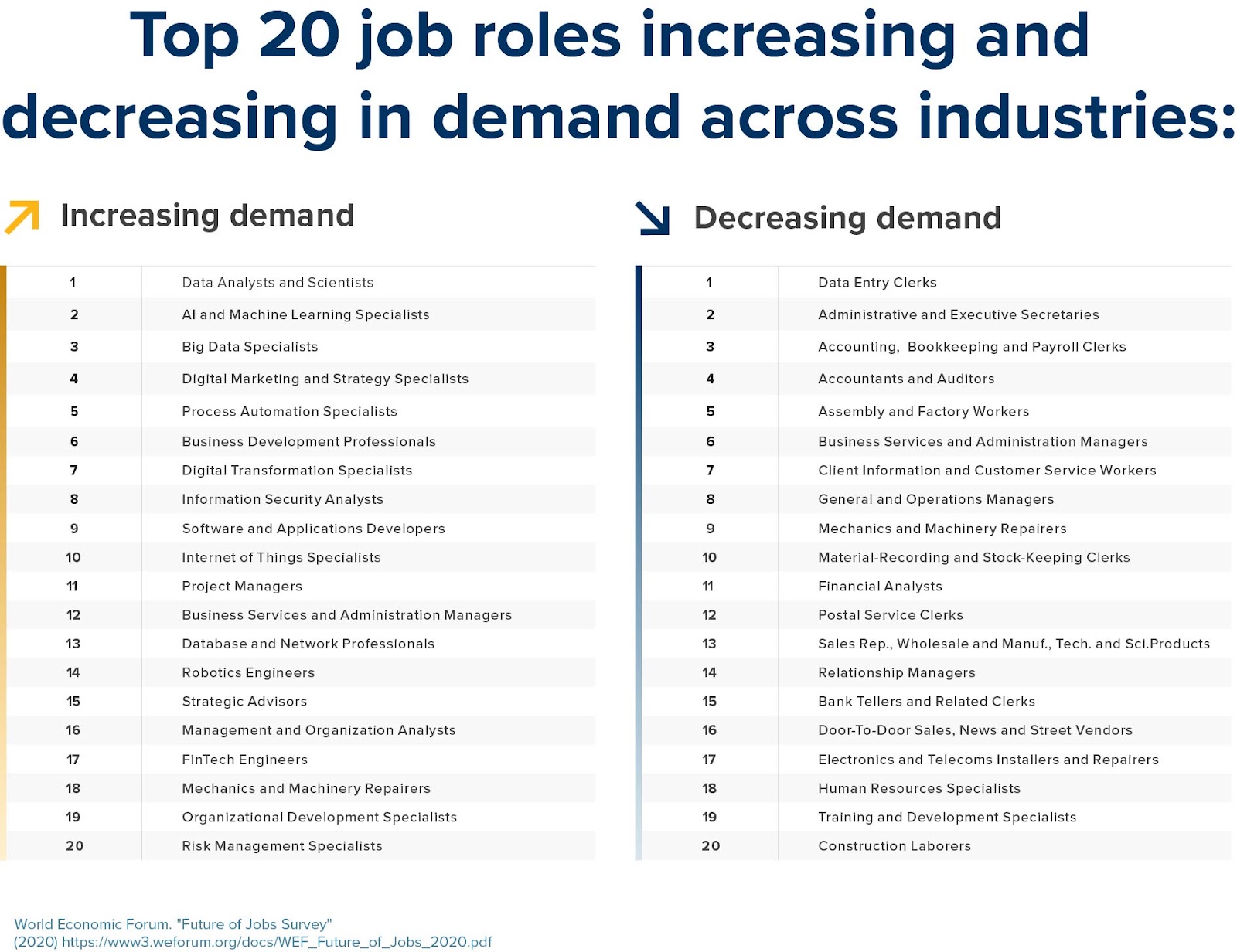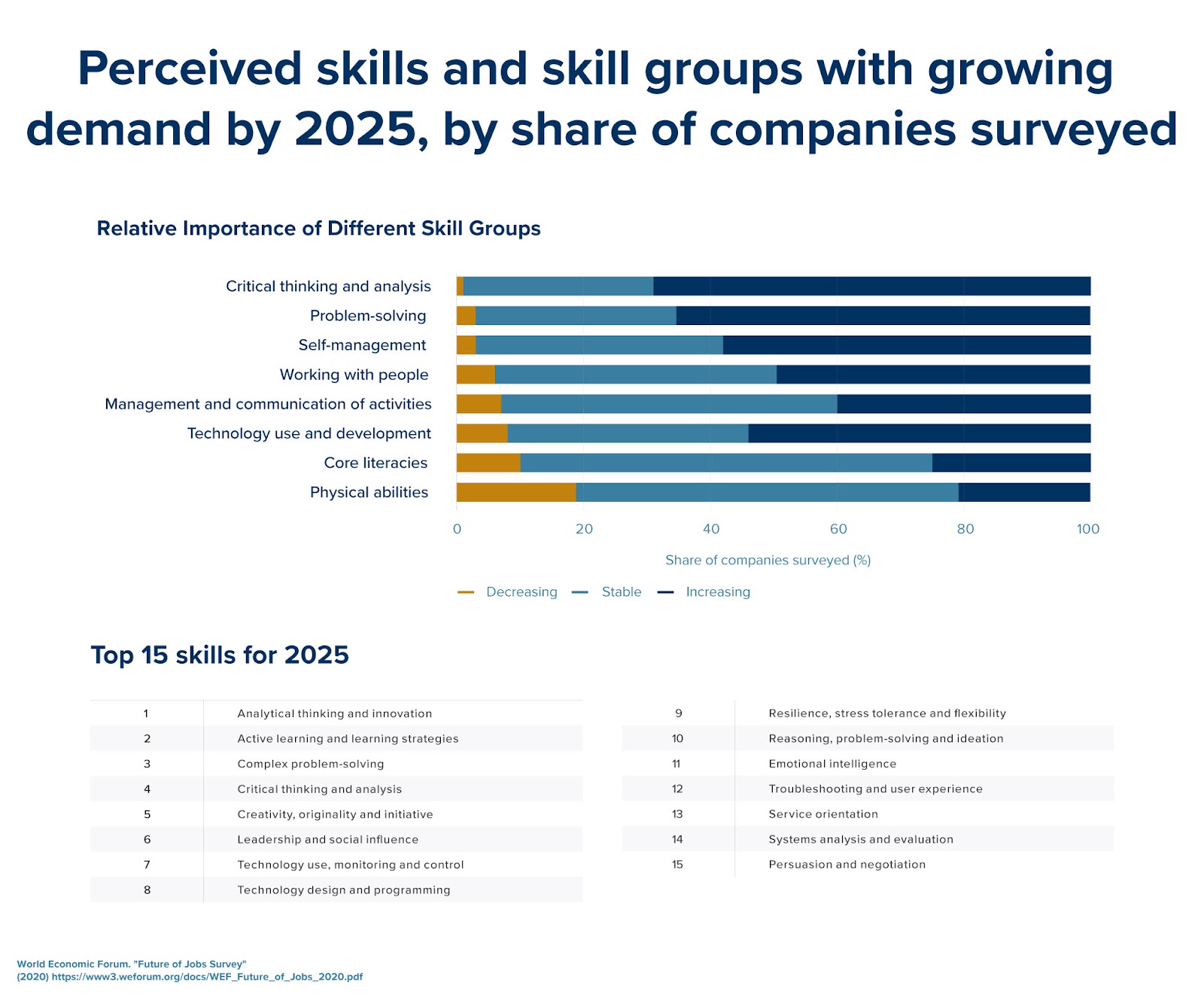Why Upskilling and Reskilling Are Important
Technological innovation advances industries rapidly and shows no signs of slowing in the future. This trend can create a skills gap — the gap between an existing workforce’s abilities and those needed to perform tasks effectively moving into the future. Together, upskilling and reskilling present a dynamic solution for bridging skills gaps across the contemporary work landscape, which continues to shift as we adopt new technologies. According to the 2020 Citrix Talent Accelerator report (PDF, 2,008KB), half of the global workforce will require either upskilling or reskilling by 2025.
Workflows are changing, meaning that the skills and jobs that are in demand are also changing. Although many of today’s roles will become obsolete due to industry advancements, the “jobs of the future” are already providing an abundance of exciting opportunities into emergent fields. The WEF predicts that, within the decade, job growth will offset job destruction. Specifically, there will be surging demand for workers to fill roles in data science, AI, engineering, cloud computing and the green economy (to name a few).
For individuals who are experiencing stagnation or preparing to move into a new field with better prospects, upskilling and reskilling are viable options for increasing competencies in the current job market. Plus, with the near-constant evolution within “future-proof” industries and roles, upskilling will likely become a routine component for even the most relevant professions. Gaining a strong foothold in the different ways you can gain new knowledge and enhance your abilities is a solid first step for anyone envisioning a long, prosperous career.
Employers see the value in skills-based learning as well. According to a recent Forbes article, with the pandemic shrinking hiring budgets across businesses of all sizes, more companies are investing in their current workforce by encouraging employees to enroll in continuing education and similar programs. In doing so, they ensure that employees are better equipped to perform tasks, can evolve with changing industry landscapes and are more likely to stay with the company as their careers progress — all while saving money for the organization.
 Live Chat
Live Chat


